
Duomo Square or Cathedral Square (Piazza del Duomo) is the main, most visited and largest square in the historic center of Milan.
Cathedral Square marks the city center, both in a geographical sense and because of the importance from an artistic, cultural and social point of view. No wonder the Duomo Square is called the heart of Milan!
Piazza del Duomo has a rectangular shape and its total area is 17,000 sq.m.
What is so famous for this area? Around the area are concentrated the most outstanding and important sights not only of Milan but of Italy in General, and some of the most prestigious commercial areas of the city.
So, the most prominent buildings of the square are the Duomo, the Royal Palace, Galleria Vittorio Emanuele II, Palazzo Carminati and Palazzo arengario.
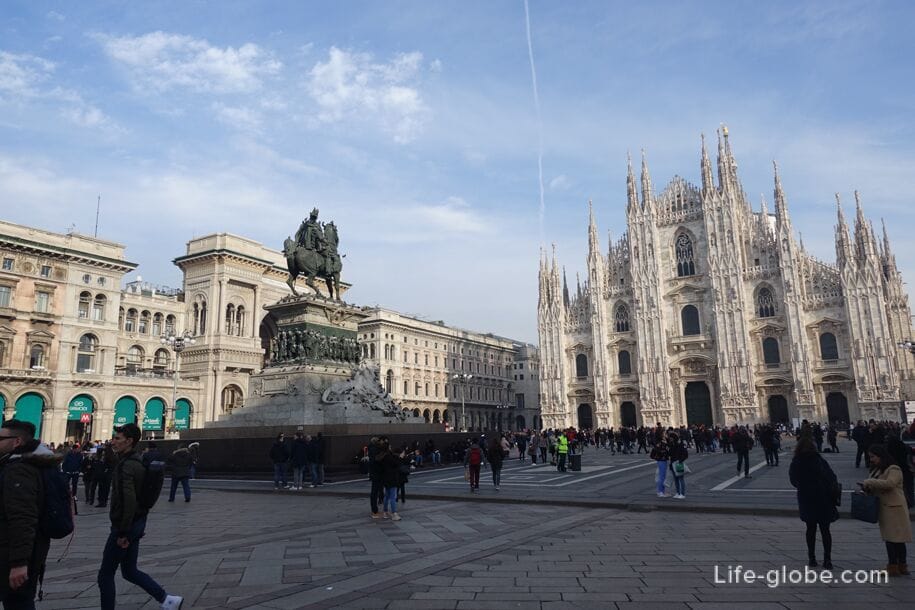


In the middle, stands a monument to the first king of Italy - Victor Emanuel II, seated on a spirited steed (Monumento a Vittorio Emanuele II).
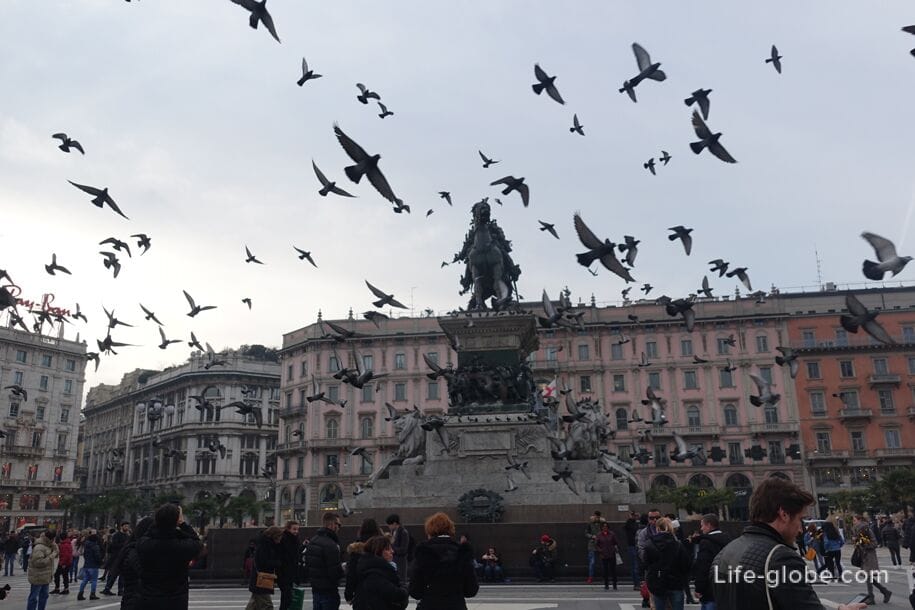
Milan Cathedral (Duomo di Milan/Duomo di Milano), in whose honor and named the area, without a doubt, is the largest and most prominent building not only square, but only of Milan.
First of all, the Duomo is famous for its eye-catching architecture in the style of flamboyant Gothic (Flamboyant), and the fact that he is one of the largest cathedrals in the world.
It's not just a Cathedral is the main attraction and the symbol of Milan and one of the most capacious churches of Europe, its capacity reaches 4,000 people.
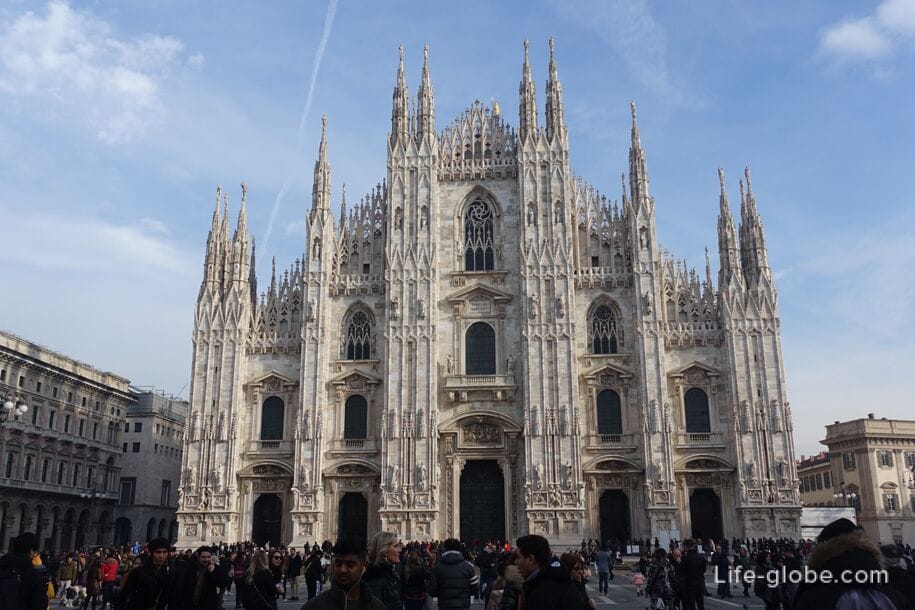
The enormous amount of white marble, a huge variety of sculptures, slim towers, Spili, columns and carvings around the perimeter of the Cathedral, the Basilica lend a grace and charm so consider the exterior architecture of the Cathedral can be very long.
At the top of the Cathedral one can see a Golden statue of the patron Saint of Milan - Madonna (La Madonnina).
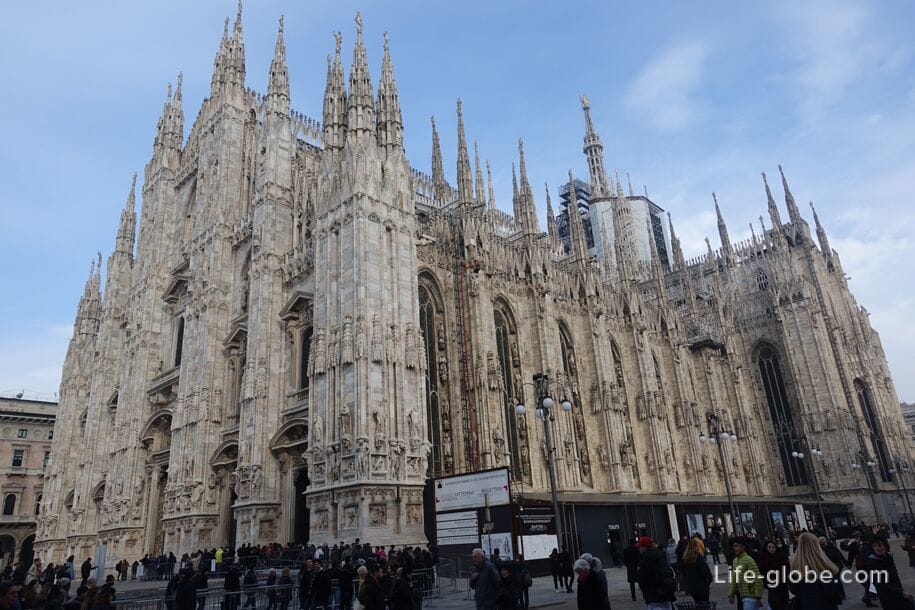
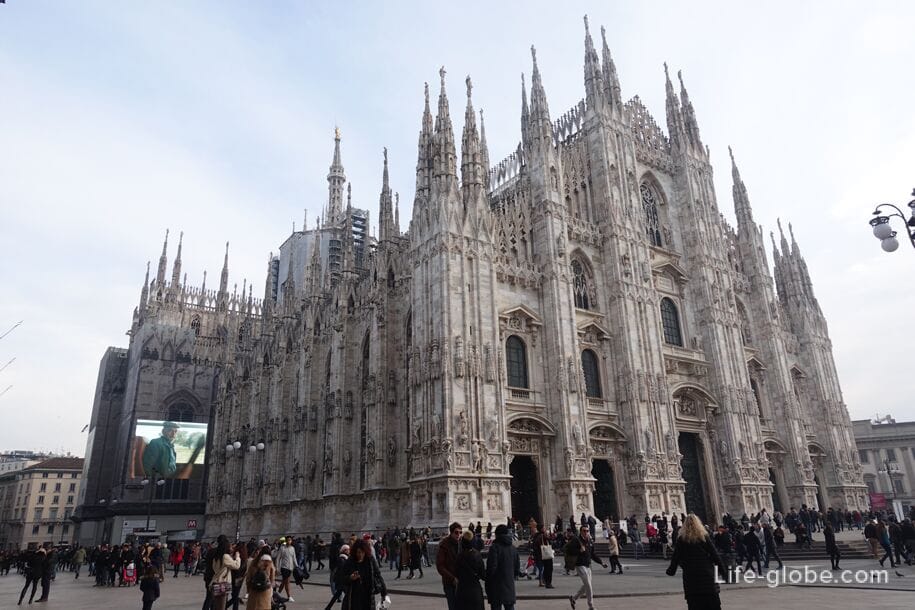
This white marble ear has a rich history. The construction lasted for several centuries from 1386 to 1813, he, then as the last details of the Cathedral were finished only in the 20th century that was * the signified the opening of the last gate completed on 6 January 1965. Officially, this date is considered to be part of the process of construction of the Cathedral, although even now some unaccounted blocks remain unfinished statues. During world war II, the Duomo, got some damage, although to a lesser extent in comparison with other large buildings in the vicinity, such as Teatro Alla Scala.
The interior of the Milan Cathedral is not so much luxurious but also makes an impression. Grey tall columns, an impressive space of the chapel and painted stained glass Windows are doing their job, forcing to admire. Above the altar is a nail which, according to legend, was used for the crucifixion of Jesus Christ.
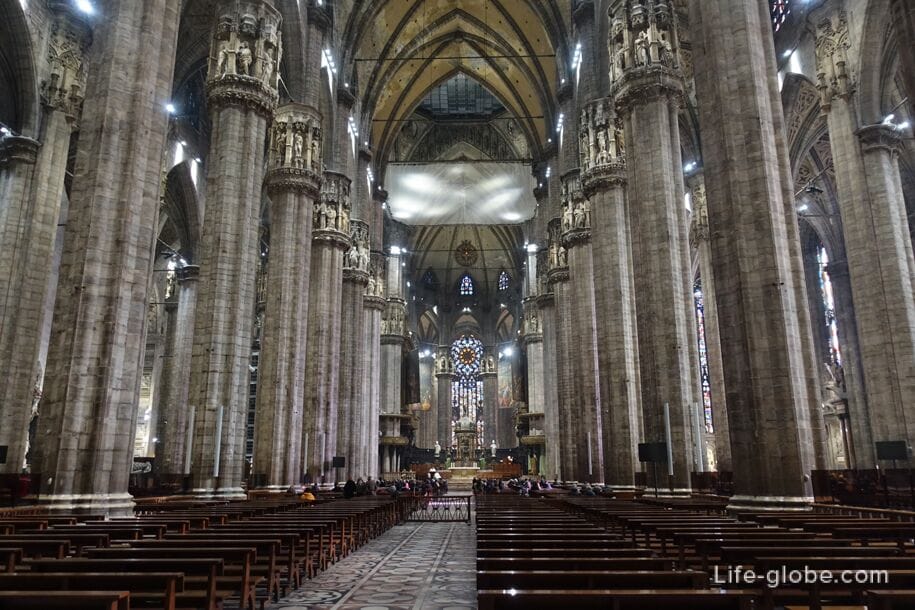
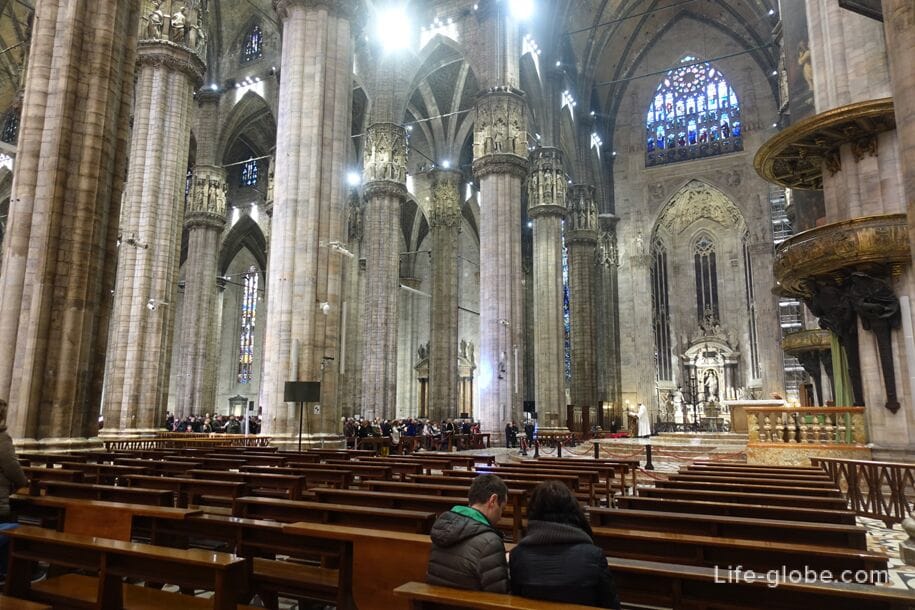
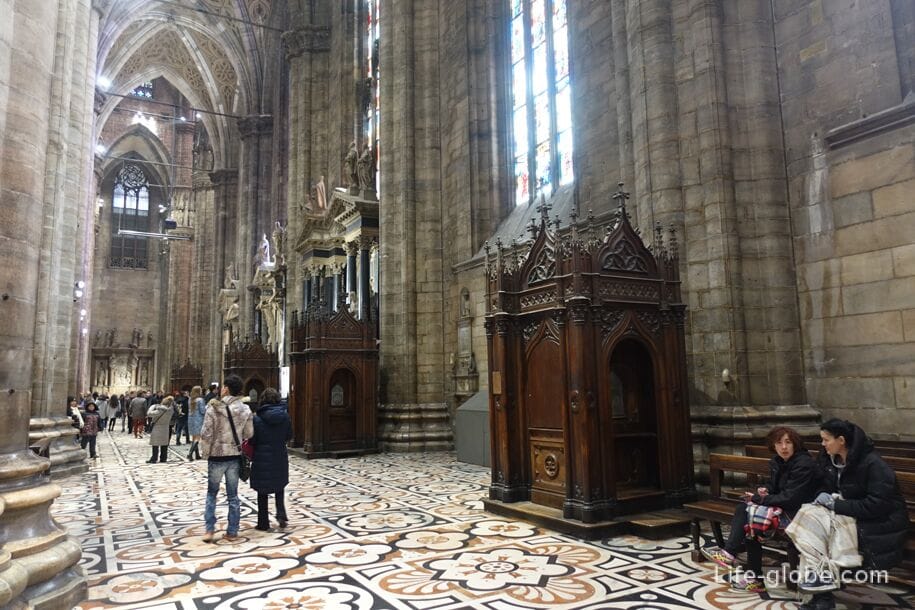
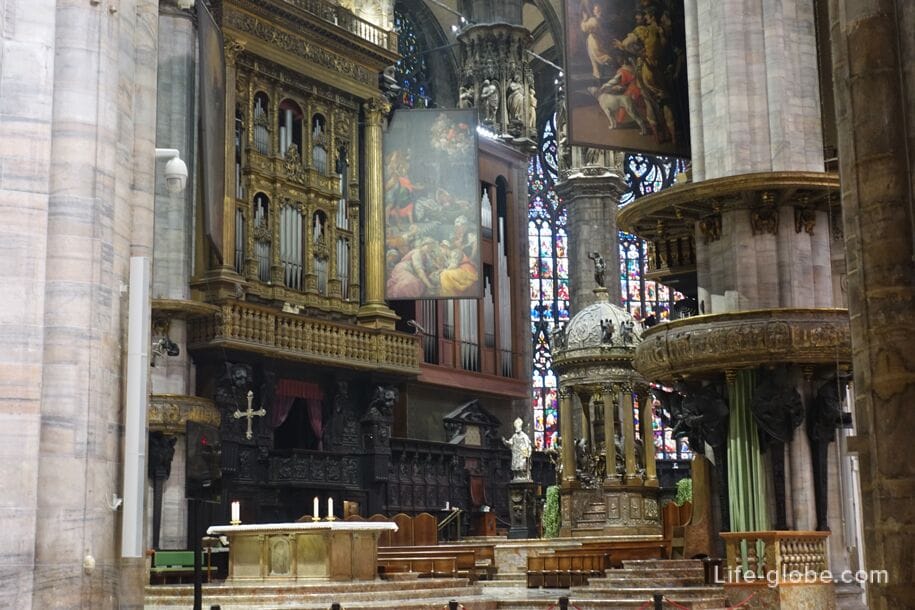




To the right of the altar are the most famous and interesting statue of the Cathedral is the statue of St. Bartholomew Flaed (1562 g). According to legend St. flayed alive, so in statues he is depicted without skin, and the skin only covers the shoulders and part of the body of Bartholomew.
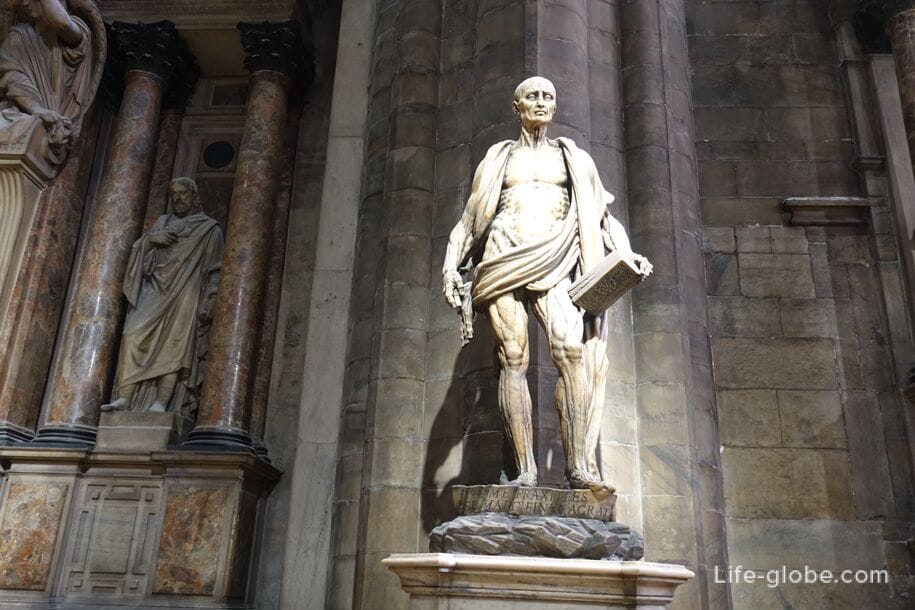
Royal Palace (Palazzo Reale di Milano) - for a long time was the residence of the rulers of Milan. Today the Palace serves as a cultural center and is home to expositions and exhibitions. The Palace houses the Museum of the Cathedral (Duomo Museum). Also here is the Church of the Royal Palace of San Gottardo in Corte.
Originally designed with the structure of the two courtyards, the Palace was partially destroyed in order to make room for the Duomo. The Palace is located to the right of the facade of the Duomo, opposite the Galleria Vittorio Emanuele II . The facade follows the style of the ancient courtyard, forming a lane in respect to Piazza del Duomo, known as the Piazzetta Reale (Small Royal square).
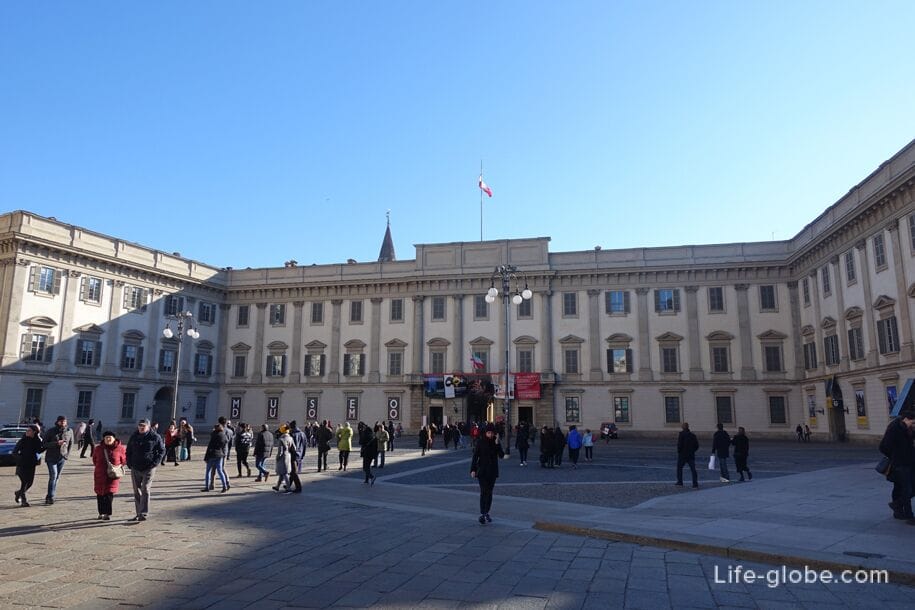
The Palace suffered great centuries-old history. So, the building was badly damaged in the night of 15 August 1943, when the city was struck by a British Bombardier. Although the bomb did not hit the building, but part of the Palace was destroyed by fire unleashed in neighbouring buildings.
After the war, in 1947, the oversight of cultural heritage began the reconstruction of the building. But only at the beginning of the 21st century, after more than fifty years after the destruction of the Palace during the war, the Royal Palace began to play a Central role in the social and cultural life of Milan. Despite the fact that at the present time he is in the third stage of restoration, the Palace is still not regained all their original splendor. Visitors can admire the halls of the Palace Museum with the route through the four seasons of Palace history: the era of Teresiana and neoclassical, the Napoleonic era, the restoration and the unification of Italy.
A Museum dedicated to the Milan Cathedral. Here you can see the original part of the Cathedral, such as statues, pieces of Cathedral stained glass, as well as the layout of the Cathedral in miniature, paintings, icons and other items from the history of the Cathedral.
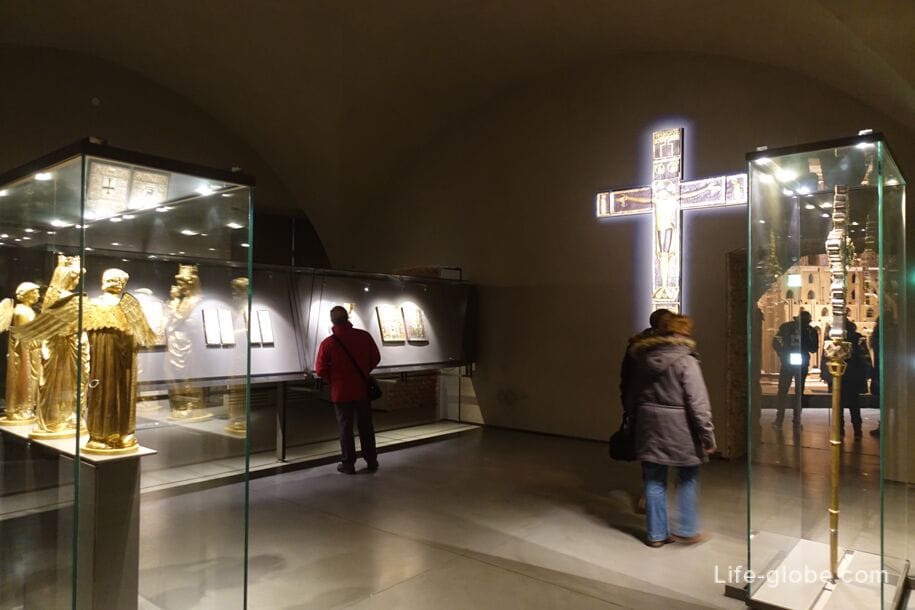
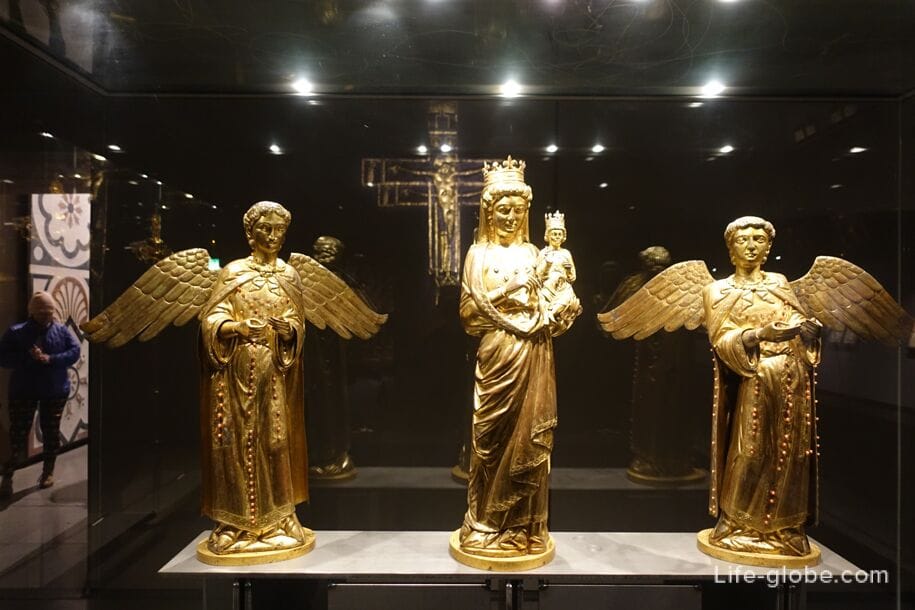
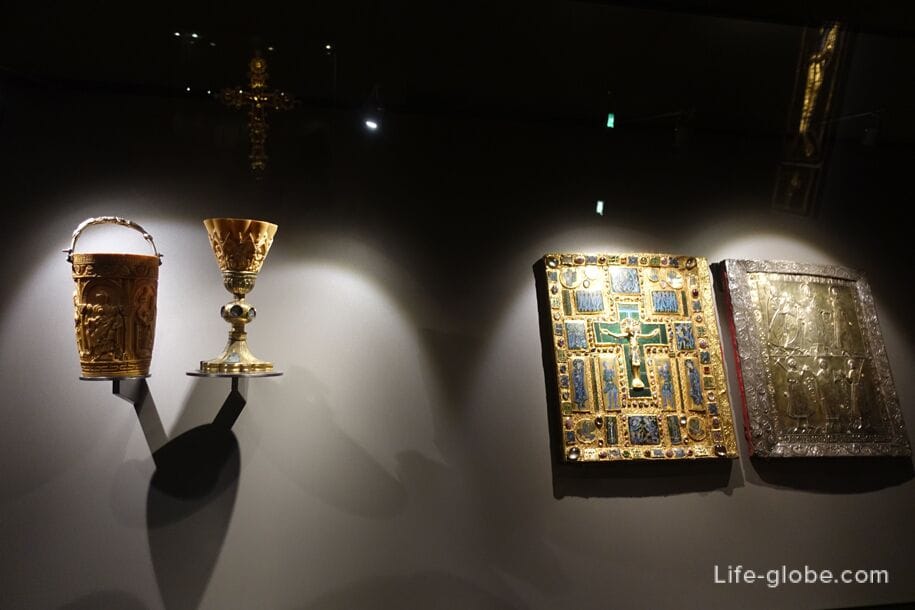
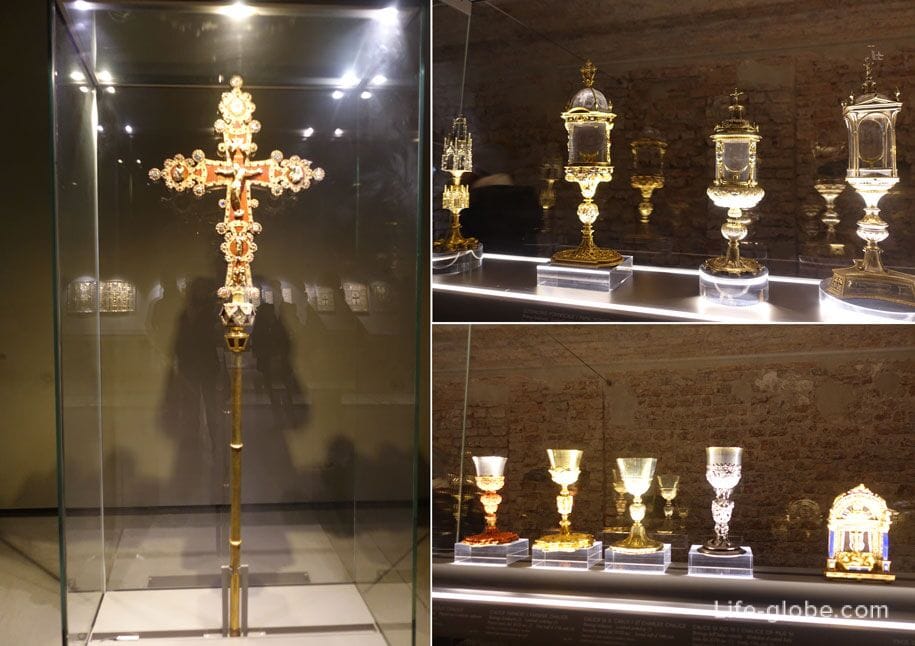
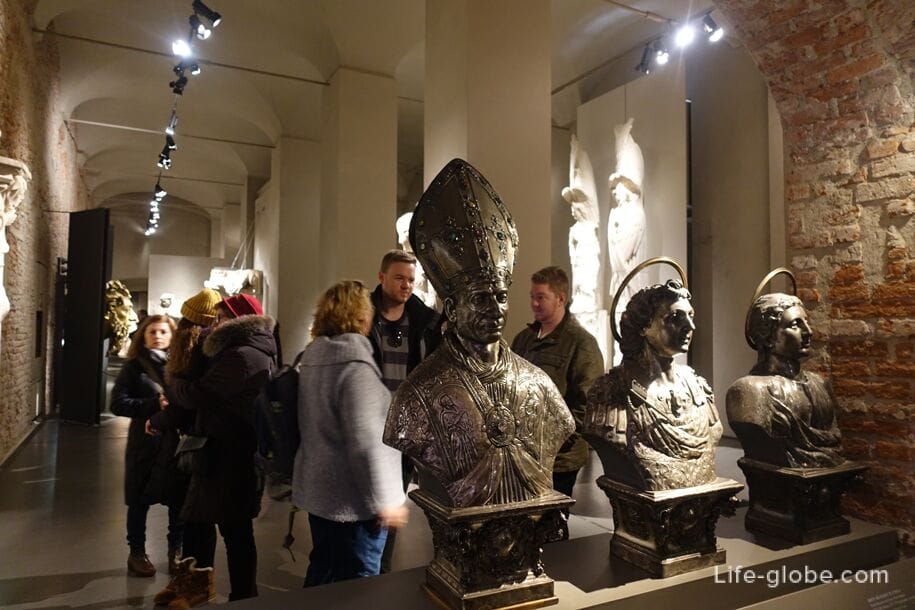
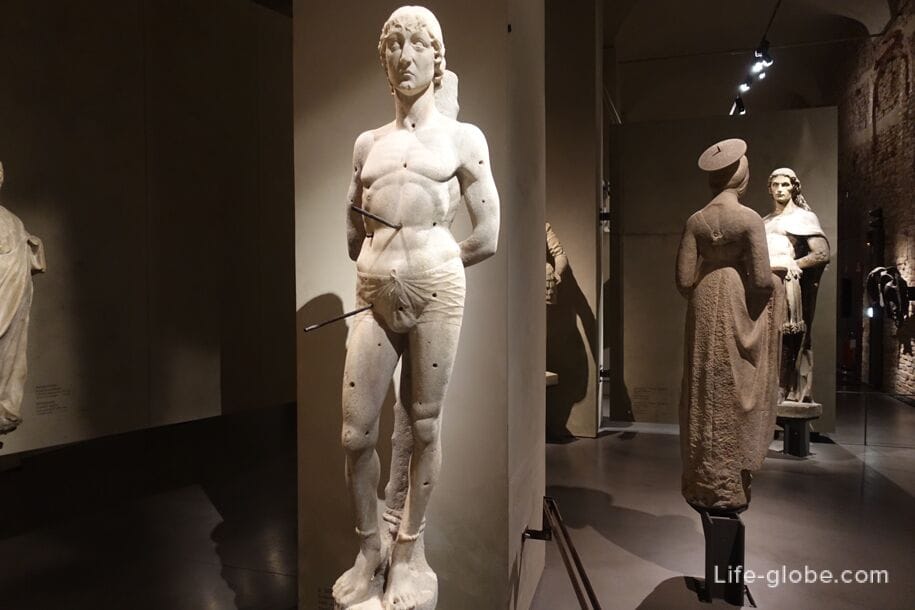
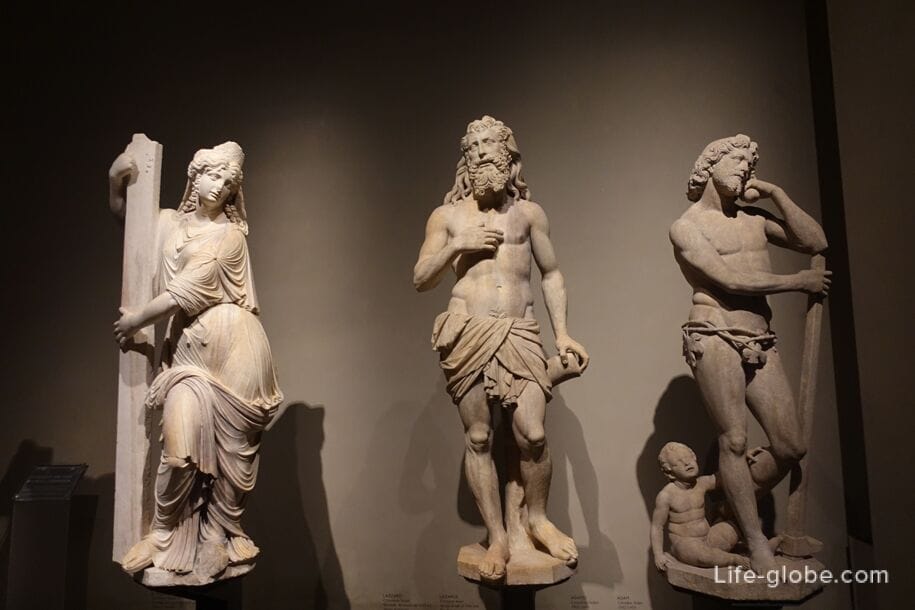
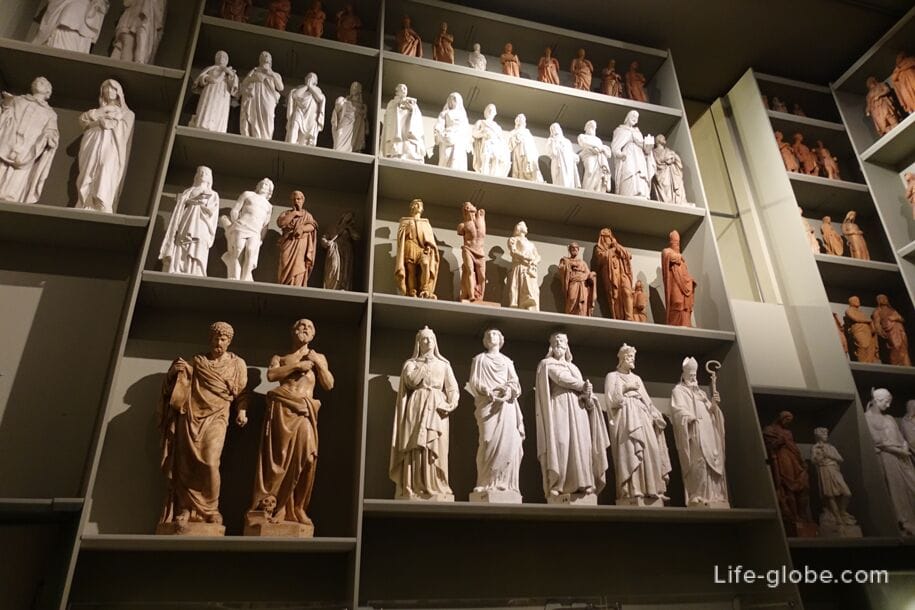
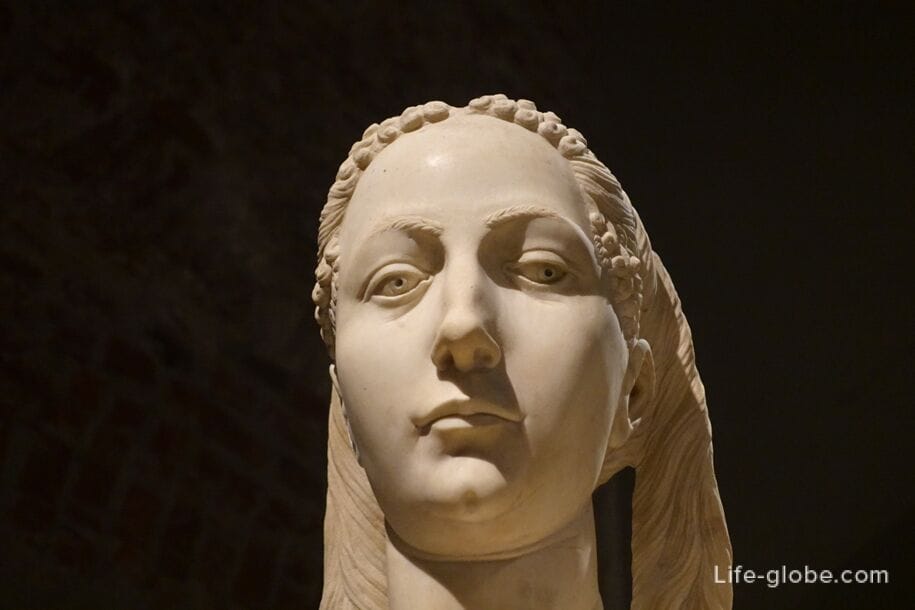


From the Duomo Museum you can go to the chapel of San Gottardo in Corte (Chiesa di San Gottardo in Corte), forming part of the route for the Duomo Museum. Date of construction of the Church: 1330 - 1336's.
The original Church was dedicated to the virgin Mary, but Azzone who had gout, and later changed the name of the Church and since then the chapel dedicated to St. Gottardo Hildesheim, the patron Saint of all those who have had gout.
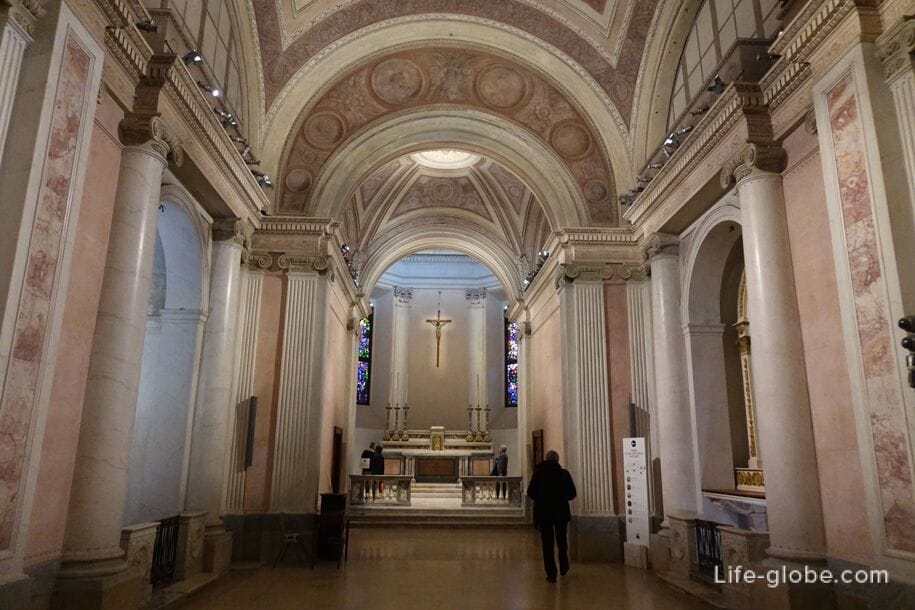
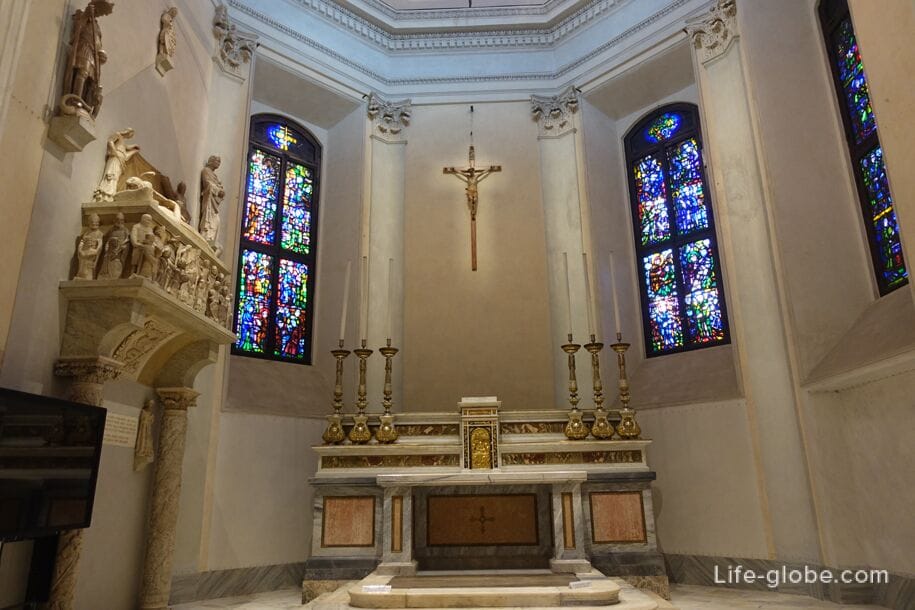
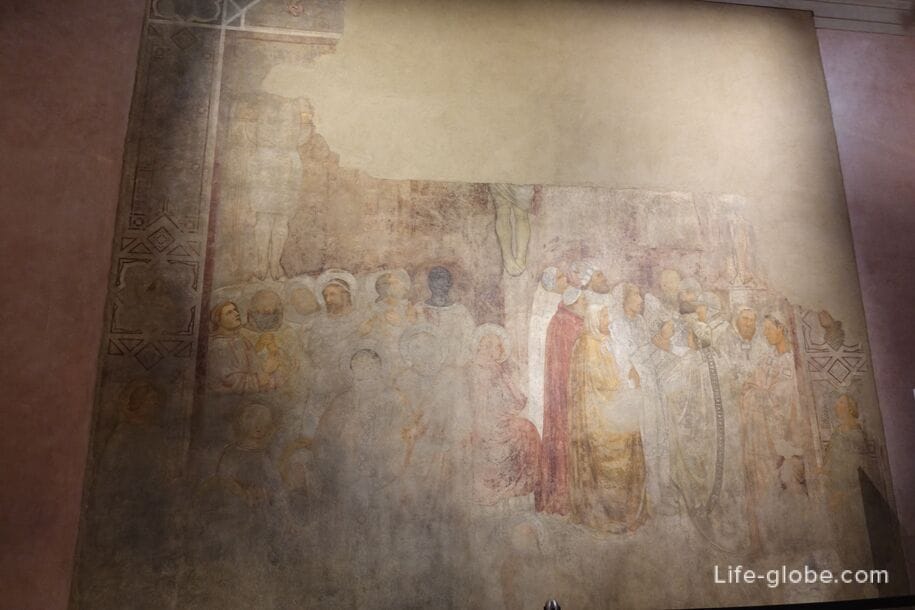
In the churchyard can be seen the sculpture "Paradox" (paradosso)
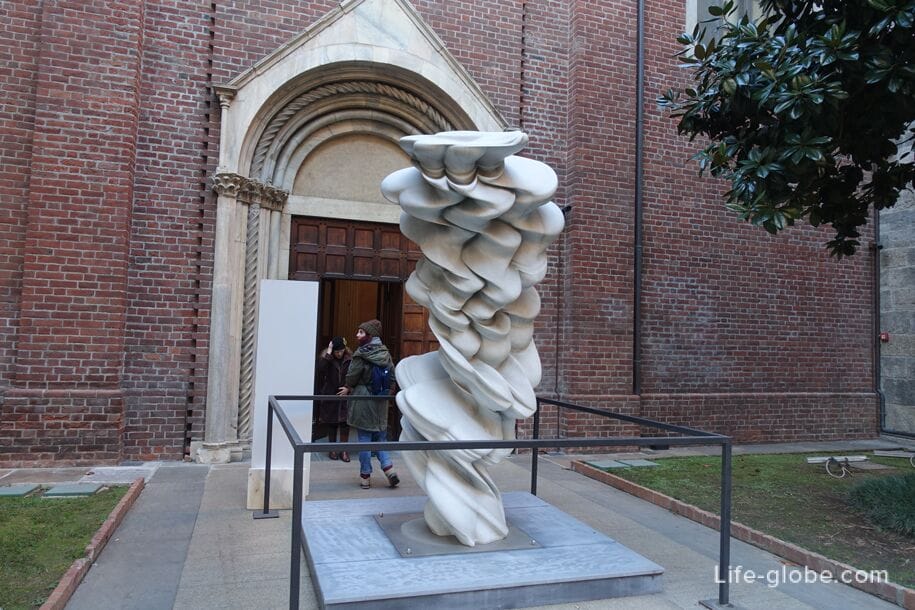
Opposite the Royal Palace, Galleria Vittorio Emanuele II (Galleria Vittorio Emanuele II) - another outstanding building of the Duomo square.
Galleria was designed in 1861 and built by architect Giuseppe Mengoni between 1865 and 1877 years. Named in honor of Victor Emmanuel II, the first king of the Kingdom of Italy.
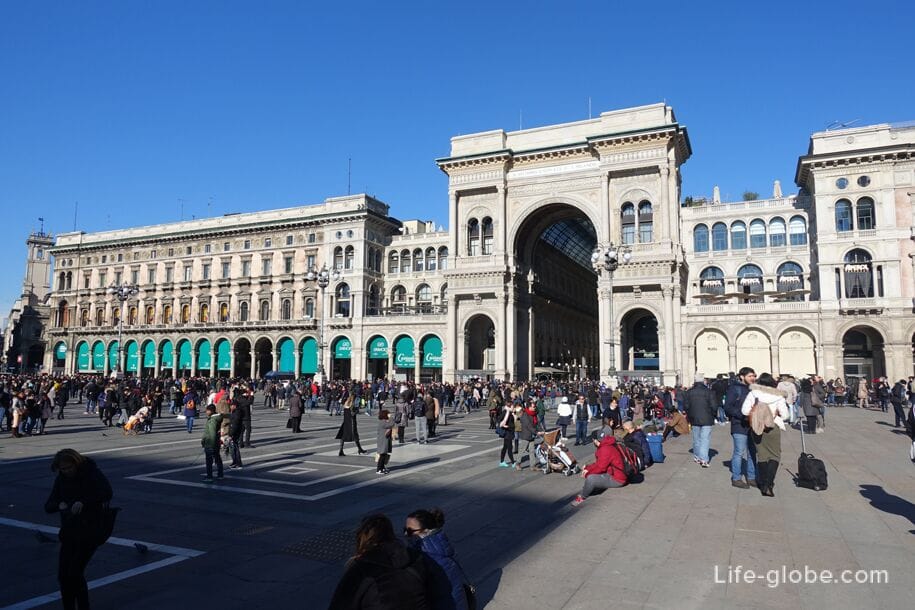
The gallery is the oldest shopping center in Italy and is a passage where elite boutiques and shops of famous world brands of clothing and shoes are located. In addition to shops, there are many cafes, restaurants and eateries in the gallery. There is elite 5-star TownHouse Galleria Hotel with luxurious designer rooms with a balcony and the most modern appliances, a minibar and a flat-screen TV with satellite channels and pay-per-view channels.
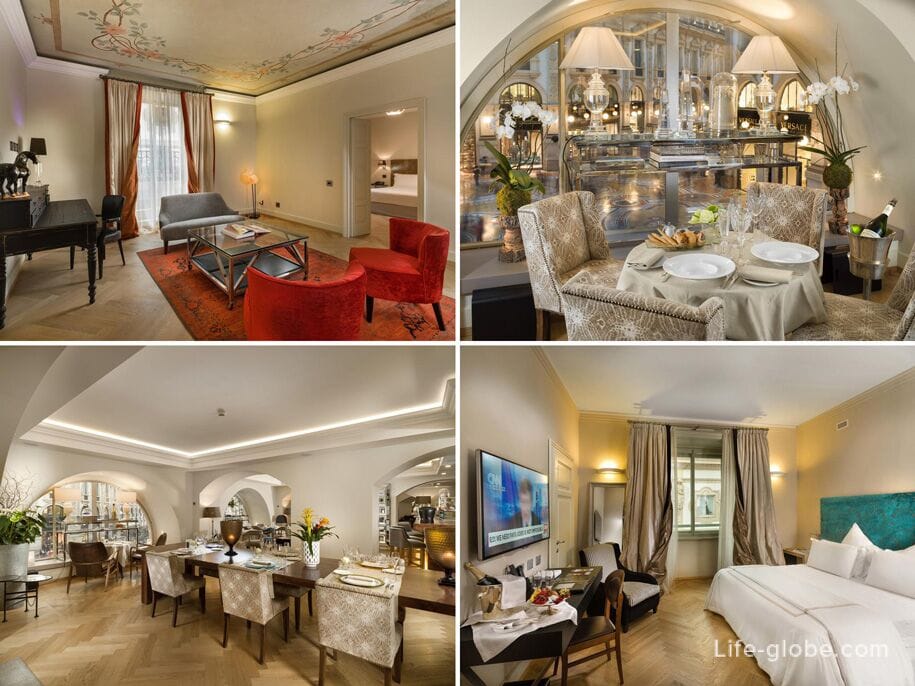
The gallery is beautiful in itself, walk along it, admiring the exquisite architecture and elegance, of course, is everyone who decided to visit Milan.
The building of the passage has the shape of a Latin cross, consists of two glass-vaulted arcades with octagonal center adorned with mosaics depicting the four continents, as well as allegorical images of art, agriculture, science and industry. Milan shopping gallery connects the square in front of the Duomo Cathedral with the square in front of La Scala theatre.
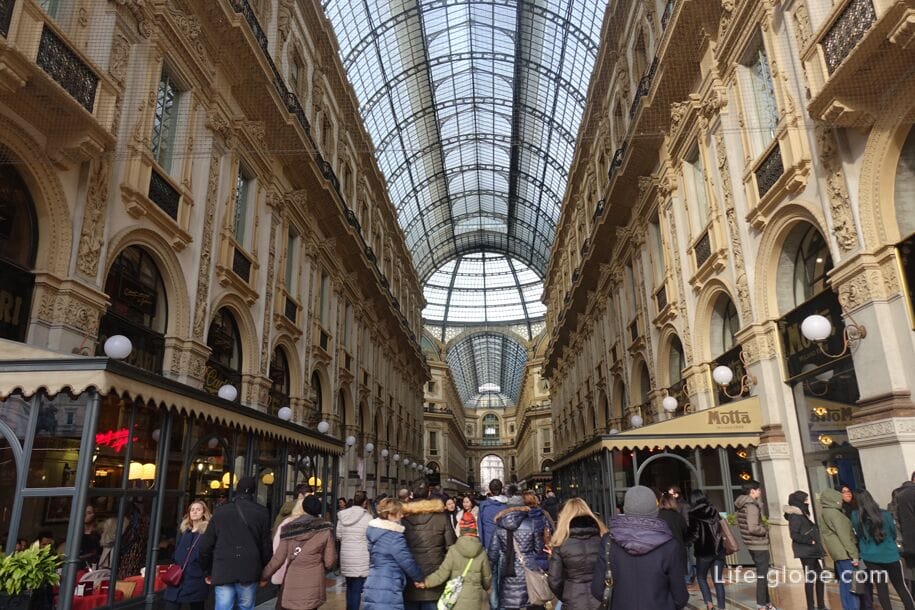

The Palace or Palazzo Carminati Carminati (Palazzo Carminati) is located in front of Milan Cathedral on the West side of Piazza del Duomo, the monument to Victor Emmanuel II.
This inconspicuous building on the background of other, more impressive and attractive buildings of the square, did not immediately notice.
The Palace was built in the late 1860s as the private home of the famous Milanese manufacturer of silver, Giacomo Casati.
In the 20th century the Palace became the symbol of economic prosperity of Milan. A symbol of prosperity was the large neon advertising signs on the facade of the building.
Today in the premises of the Palace of Carminati offices of local companies, salons and boutiques as well as luxury apartments with views of the Piazza Duomo. All accommodation facilities in Milan, from budget to expensive and trendy, you can view and book here.

Palace arengario (Palazzo Dell the arengario) is a complex of two symmetrical buildings built in the period from 1936 to 1956.
The word "arengario" refers to its original function as the seat of local government in the Nazi period.
The Palazzo Dell arengario is located near the Royal Palace. Currently located in the arengario Museum of art of the twentieth century (Museo del Novecento), dedicated to the art of the 20th century, especially known for its unique collection of paintings of the futurists.
The entrance to the Museum is paid is 5 Euros. Last entry is permitted one hour before closing time. Free entry, starts two hours before closing time, and every Tuesday from 14:00 hours.
The entrance to the Cathedral are paid. Is 3 Euros per person. Children from 6 to 12 years (supporting documents required) - 2 Euros. The ticket price includes a visit to the Cathedral, the Duomo Museum and the Church of San Gottardo in Corte, located in the Royal Palace.
For a fee you can climb to the roof of the Milan Cathedral (the terrace). Cost: 9 Euro for adults and 4.50 Euros - children from 6 to 12 years, if you climb on foot; 13, and 7 euros if you take the Elevator. The entrance to the roof is on the left side of the Cathedral, lifts: both left and right sides (it happens, there is only one Elevator).
You can also visit the archaeological area, located in the Cathedral. Cost 7 and 3 Euros. The cost of the ticket is the same as for 3 Euros + archaeological area.
Single tickets:
1. Cathedral + terraces by lift +the Cathedral Museum +archaeological area + Church of the Holy Gottard = 16 and 8 Euro;
2. Cathedral + terraces walk +the Cathedral Museum +archaeological area + Church of the Holy Gottard = 12 and 6 Euros.
Audioguide (to rent inside the Cathedral) - 9 and 3 euros.
Tour guide at 2.50 and 2 Euro (for groups must be booked in advance on the website).
Children up to 6 years, disabled people and accompanying person, military in uniform and persons accompanying groups free of charge. Free ticket can be obtained at the box office.
All tickets are valid for 72 hours from first use.
Opening hours: Cathedral - daily 08:00 to 19:00; the terraces of the Cathedral and the archaeological area is open daily from 09:00 to 19:00; Museum of the Cathedral and the Church of St. Gottardo - c 10:00 to 18:00 hours (Monday or Wednesday (depending on season): closed).
Attention! Entrance fees and opening hours of Milan of the complex may vary, check before visiting.
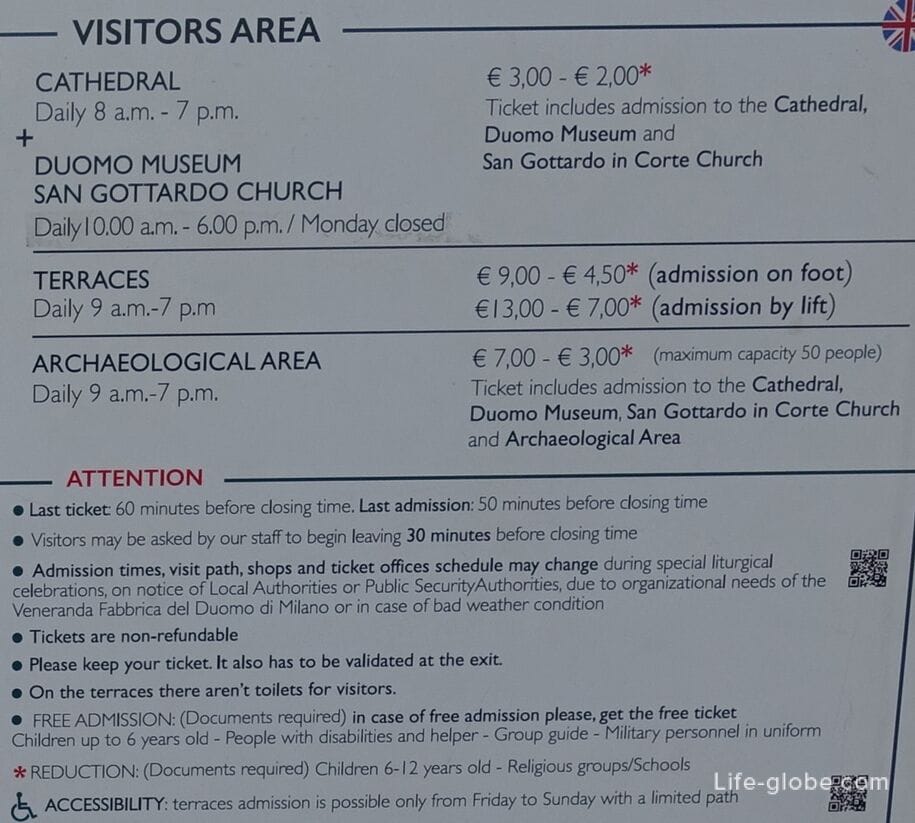
Tickets can be purchased at the box office, in a building located in front of the right side of the Cathedral. Due to the fact that to visit the Cathedral of wish by many tourists, you have to defend multiple queues, but queues move fast. At the entrance to the ticket office first, take the voucher with a number. When paying with a credit card you can proceed directly to the vending machines for tickets. Then pass into the main hall where we are waiting for their queue, number of coupons displayed on the scoreboard after the scoreboard lit up to the desired number, suitable to the specified counter and buy tickets.
Then go to the queue in front of the main entrance to Milan Cathedral (if a visit to the Cathedral is planned in the first place, the order of visiting the Duomo complex is irrelevant). Here we pass the control (inspection) and after that go to the Duomo.

All accommodation facilities in Milan, including in the city center and more remote from it, can be viewed and booked here